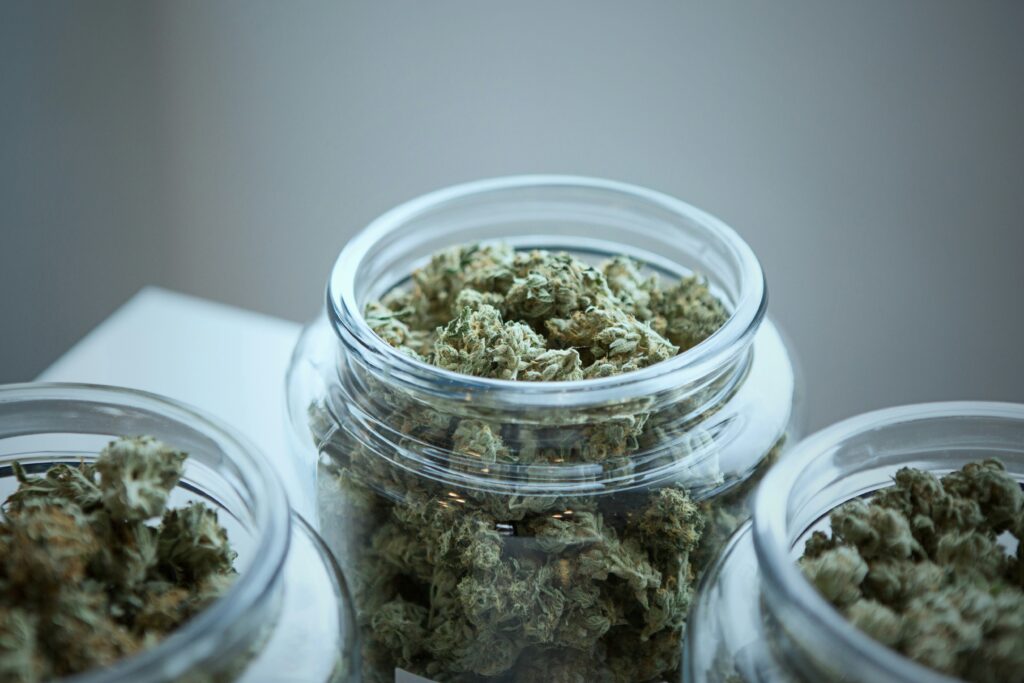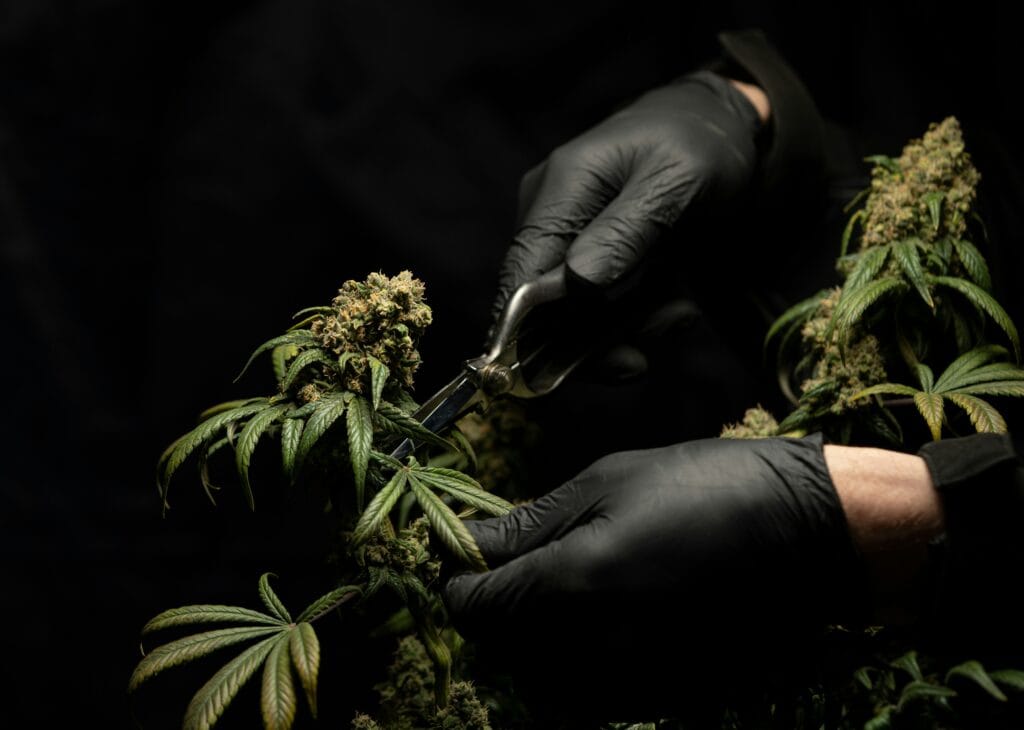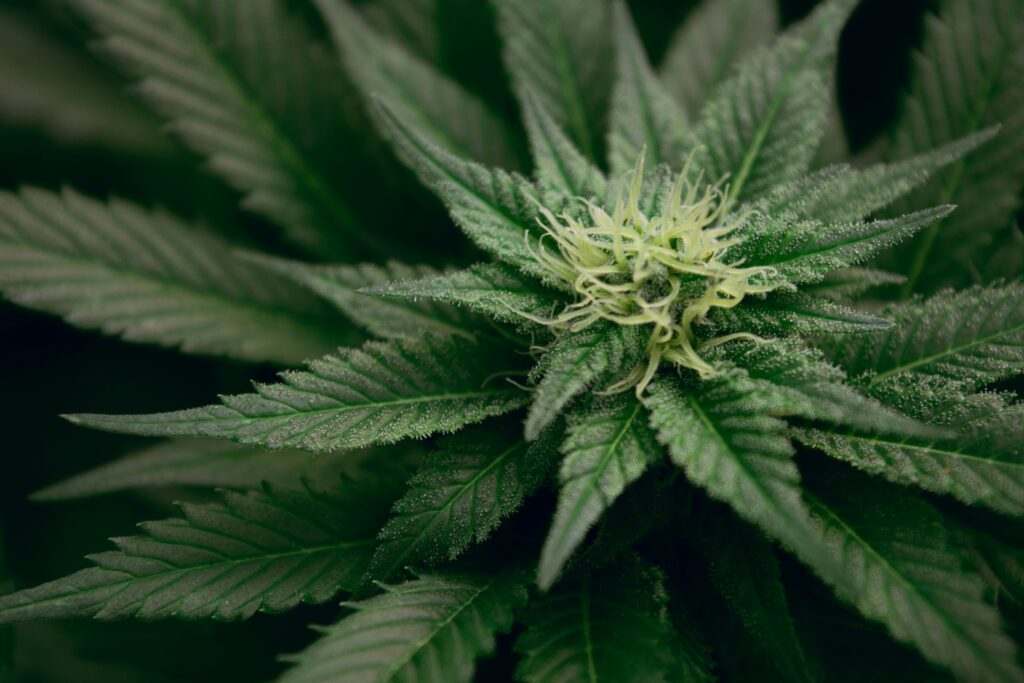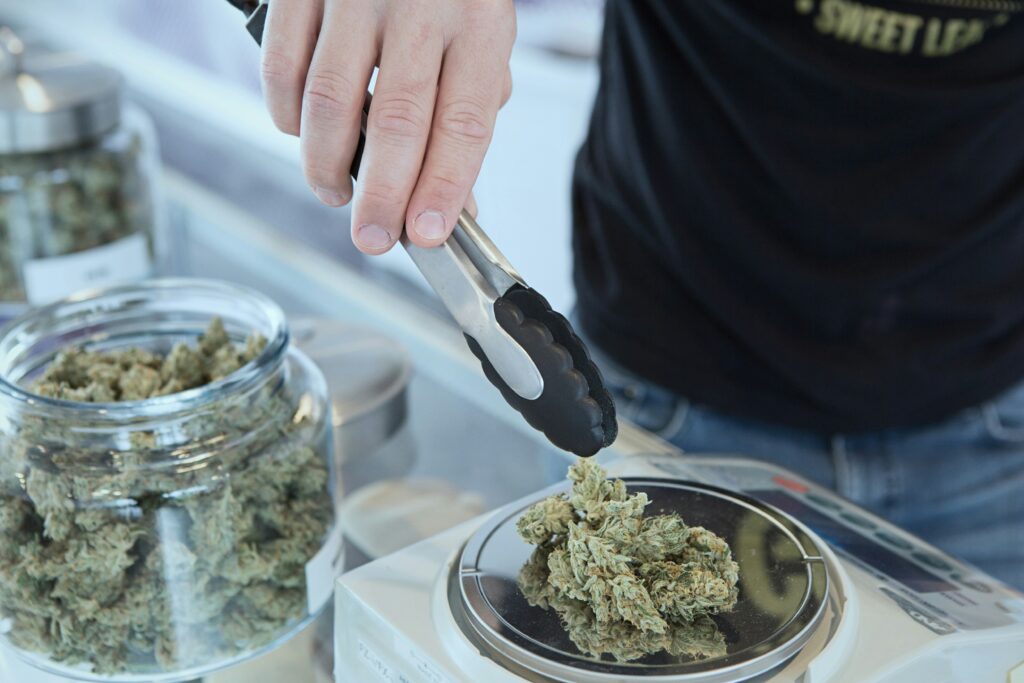Cannabis is widely viewed as a relatively safe substance, especially when compared to harder drugs. But that perception can lead to false security—because not all marijuana is what it seems.
When weed is laced (mixed or contaminated with another substance), it can lead to unpredictable and dangerous reactions. Whether you use cannabis recreationally or medicinally, knowing the symptoms of laced weed can be the difference between safety and a medical emergency.
In this article, we’ll explain what laced weed is, how to recognize its symptoms, what to do if you suspect contamination, and how to protect yourself or a loved one.

What Is Laced Weed?
“Laced weed” refers to cannabis that has been intentionally or unintentionally contaminated with another substance—anything from powerful synthetic drugs to everyday household chemicals. This contamination can occur at multiple stages, from the growing and harvesting process to distribution on the street. In some cases, sellers intentionally lace weed to enhance its potency, create dependency, or increase profits by cutting it with cheaper additives. In other cases, contamination happens accidentally due to poor handling, cross-contact with other drugs, or environmental toxins.
This problem is most common when marijuana is purchased from unregulated or street sources, where there’s no testing, labeling, or quality control to ensure safety. Without oversight, users have no real way to know what they’re inhaling or ingesting. What may look like harmless cannabis could actually contain substances like fentanyl, PCP, or synthetic cannabinoids—each capable of triggering serious and unpredictable health effects. That’s why recognizing the symptoms of laced weed is so important: early awareness can help prevent medical emergencies and potentially save lives.
Substances used to lace cannabis may include:
- Fentanyl or other opioids – can cause respiratory failure and overdose
- Methamphetamine or cocaine – powerful stimulants that increase heart rate and anxiety
- PCP (Phencyclidine) – a hallucinogen that can cause violent or psychotic behavior
- Synthetic cannabinoids (K2, Spice) – unpredictable and highly potent chemicals
- Household chemicals, detergents, or glass particles – toxic substances that cause physical harm
Even small amounts of these additives can trigger serious symptoms of laced weed, and in some cases, they can be fatal.
Common Symptoms of Laced Weed
Everyone reacts differently to substances, and the body’s response can vary depending on what the cannabis has been laced with. Still, there are certain warning signs that tend to appear when marijuana has been contaminated with foreign or dangerous additives. These symptoms may set in within minutes or gradually intensify over time, depending on how much was used and what the weed was mixed with. Some people may experience sudden changes in mood or perception, while others might feel intense physical discomfort or confusion.
If you or someone around you begins to feel “off” in a way that seems stronger or stranger than a normal cannabis high—such as severe dizziness, agitation, chest pain, hallucinations, or nausea—it’s important to take it seriously. These sensations can be the body’s way of signaling distress or toxicity. If you notice any of the following symptoms of laced weed, stop using immediately, move to a safe environment, and seek medical attention. Acting quickly could prevent a medical emergency and protect you or someone you care about from potentially life-threatening effects.
1. Physical Symptoms
- Rapid heartbeat or heart palpitations
- Chest pain or tightness
- Difficulty breathing or shortness of breath
- Nausea, vomiting, or abdominal pain
- Excessive sweating or chills
- Tremors, shaking, or seizures
- Sudden fatigue, fainting, or loss of consciousness
These physical symptoms of laced weed can come on quickly and are often much more intense than typical cannabis effects.
2. Psychological or Behavioral Symptoms
Laced weed can dramatically affect mood, perception, and behavior. Warning signs include:
- Intense paranoia or panic attacks
- Hallucinations or delusions
- Extreme confusion or disorientation
- Aggression or violent outbursts
- Severe anxiety or feelings of detachment from reality
If someone’s reaction seems wildly different from a normal cannabis high, that’s a red flag.
3. Unusual or Severe Medical Reactions
Some contaminants produce distinctive physical symptoms, such as:
- Internal bleeding or bruising (linked to rat poison contamination)
- Severe respiratory depression (possible fentanyl exposure)
- Uncontrollable shaking or muscle spasms (from stimulants like meth or cocaine)
These advanced symptoms of laced weed require emergency care immediately.

What the Symptoms of Laced Weed Feel Like
Many people who have used laced weed describe the experience as a “bad trip,” but one that is far more intense and frightening than a typical cannabis high. Unlike a normal marijuana effect, which may cause mild euphoria, relaxation, or slight alteration of perception, laced weed can produce sensations that feel completely out of control. You might notice your heart pounding rapidly, your vision becoming blurry or distorted, your body trembling uncontrollably, or a sudden wave of nausea or dizziness. Your thoughts may race, or conversely, your mind may feel strangely slowed, creating a sense of disorientation that can be difficult to shake.
For some, the psychological effects are even more alarming. People often report feeling detached from reality, as if they are watching themselves from the outside or losing connection with their surroundings. Hallucinations—seeing, hearing, or sensing things that aren’t actually there—can occur suddenly, along with intense paranoia, fear, or confusion. This combination of physical and mental symptoms can be overwhelming, leaving someone feeling helpless or panicked.
If you or someone nearby experiences these sensations after using cannabis, assume the weed may be laced. Do not ignore the signs or hope they will pass on their own. Acting quickly—moving to a safe environment, seeking medical attention, and monitoring vital signs—can prevent serious injury or even save a life. Recognizing these extreme reactions as potential symptoms of laced weed is critical for your safety and the safety of those around you.
How to Tell if Weed Is Laced
It’s not always easy to identify laced cannabis, but a few warning signs can help:
- Chemical odor: Smells like gasoline, cleaning products, or ammonia.
- Appearance: White specks, sticky residue, or uneven coloring.
- Texture: Feels damp, oily, or unusually powdery.
- Burning behavior: Crackles, sparks, or releases an odd-smelling smoke.
- Effect: Feels far stronger or “different” than normal, often with disorienting side effects.
If you suspect contamination, don’t use the product. No high is worth the risk.
What To Do If You Experience Symptoms of Laced Weed
If you or someone you’re with starts showing symptoms of laced weed, quick action can save a life.
Step 1: Call for Emergency Help
Call 911 immediately if the person:
- Becomes unresponsive or unconscious
- Has slowed or stopped breathing
- Experiences seizures or chest pain
Step 2: Keep Them Awake and Alert
Try to keep the person talking and responsive while waiting for help.
Step 3: Check Breathing and Pulse
If breathing becomes shallow or stops, administer Narcan (naloxone) if opioids are suspected (such as fentanyl-laced weed).
Step 4: Don’t Let Them Sleep It Off
Symptoms can worsen suddenly. Never assume they’ll recover without help.
Step 5: Preserve Evidence
If possible, save the substance and any packaging—it can help emergency responders identify the contaminant.
After immediate care, it’s essential to follow up with a healthcare provider or treatment center. Some contaminants cause internal or long-term damage that isn’t immediately visible.

Preventing Laced Weed Exposure
The best way to prevent symptoms of laced weed is through awareness and safe practices.
1. Buy from Reputable Sources
Where legal, only purchase cannabis from licensed dispensaries that test their products for contaminants.
2. Avoid Street Weed
Unregulated cannabis has no oversight—meaning it could contain anything.
3. Use Fentanyl Test Strips
These are affordable and can detect opioids in cannabis or other substances.
4. Don’t Use Alone
Having someone nearby can be life-saving in case of overdose or medical emergency.
5. Trust Your Instincts
If something feels off—whether it’s the look, smell, or effects—don’t use it.
Why Awareness of the Symptoms of Laced Weed Matters
At Knoxville Recovery Center, we firmly believe that education and prevention are some of the most powerful tools for saving lives. Understanding and recognizing the symptoms of laced weed isn’t about creating fear or paranoia—it’s about giving yourself the knowledge and confidence to respond effectively and protect your health. When you are informed, you can make safer choices, recognize danger early, and take action before a situation becomes life-threatening.
Knowing what to look for with the symptoms of laced weed doesn’t just help you—it allows you to protect your friends, family members, and the wider community. Being aware of the warning signs and potential risks of laced cannabis empowers you to intervene when necessary, encourage safer habits, and support others who may unknowingly be exposed to contaminated substances.
And if an experience with the symptoms of laced weed has left you feeling shaken, anxious, or struggling with substance use, it’s important to know that you are not alone. Help is available, and recovery is possible. At Knoxville Recovery Center, we provide compassionate care, personalized treatment plans, and a supportive environment to help you heal—physically, mentally, and emotionally. Recognizing the risks and seeking support are not signs of weakness; they are courageous steps toward reclaiming control over your health and your life.

Find Help at Knoxville Recovery Center
If you or someone you love has experienced the symptoms of laced weed or is battling addiction, Knoxville Recovery Center is here to help.
Our compassionate team offers:
- Medical detox for safe stabilization
- Dual diagnosis treatment for mental health and addiction
- Individual and group therapy
- Holistic recovery programs for mind-body healing
- Aftercare support for long-term success
You don’t have to face this alone. Recovery begins with one step.
Contact Knoxville Recovery Center today or give us a call to speak with our admissions team and start your journey toward healing.








